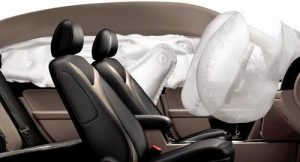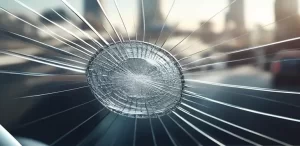Damaged windshields are a common occurrence in everyday driving, they are usually caused by flying rocks or debris and can result in small chips or large cracks. Because a small crack or chip is usually deemed insignificant by drivers, they more often than not put off getting the damage repaired. This can ultimately lead to more damage over time, and more expensive reparations.

But these aren’t the only things that should worry drivers about windshield repair, having a crack or chip in your windshield can cause a loss of structural integrity in the event of a front-end collision. The windshield actually acts as a load-bearing structure and helps to transfer the load of a front-end impact throughout the chassis of the vehicle, it also helps to keep the airbag system in place. If a windshield is damaged and a collision occurs, the airbags may not deploy correctly which can cause more injury to the driver and passengers than necessary.
In Canada there are several laws that relate to windshield condition, mainly focusing on damaged windshields that may impair driver vision. The penalties can range from a simple ticket to an order for removing the vehicle from the road if the damage is extensive and is deemed a distraction or impairment while driving.
It’s best to schedule an appointment to have your windshield fixed as soon as you notice any damage. Depending on the severity of the damage you may only need a small repair or you may have to have the whole thing replaced. Sometimes a small chip can become a larger crack over time, which is why it’s best to repair any damage right away.
If your windshield does suffer from extensive damage, outside of a collision, it may also be best to go through your insurance depending on what’s covered under your policy. Having comprehensive coverage is one way to ensure you are covered in the instance where an “act of God” occurs. Some examples of common cracked windshield causes covered under comprehensive insurance include:

- Falling tree branch
- Flying baseball
- Snow
- Hail
- Vandalism
- Road debris
- An animal
Though policies will vary depending on your insurance provider, it’s important to know exactly what is covered under what circumstances. If you’re ever unclear about what kind of coverage you may have, call your insurance provider and have them explain to you how you’ll be covered in certain cases.
Finally, when choosing how to repair your damaged windshield you’ll want to make sure it’s done by a reputable and trusted shop. As previously mentioned, windshields are an important part of your vehicle and carry a lot of safety mechanisms within their structure, so making sure you get high quality glass and service is vital to the overall safety of your vehicle.









